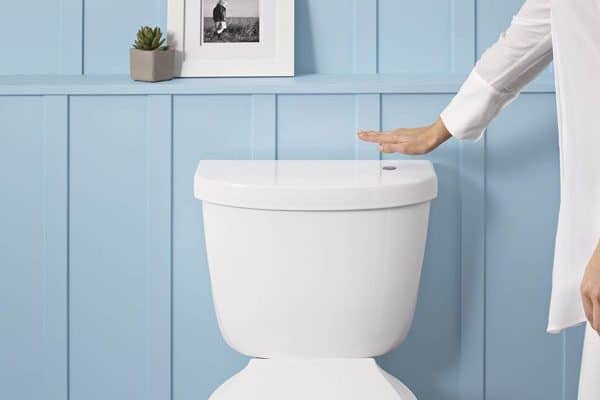So, your toilet is running. It won’t stop. You tried jiggling the handle. You tried asking your toilet nicely to behave. You tried to get your landlord to send a plumber. Each effort more futile than the last. It’s time to take matters into your own hands.
Although this is usually a rather simple fix, it’s a good idea to be familiar with the inner workings of your toilet. It’s amazing how rarely we think about the way the things we use every day (and couldn’t live without) work. So, let’s get to know your toilet.
Your toilet consists of six main parts: The tank, tank lever, fill valve, flush valve, flapper and bowl (fig. C.). A toilet is flushed by activating the tank lever, which lifts the flapper allowing water inside the tank to flow through the flush valve and into the bowl. Gravity forces the water out of the bowl and off to Neverland. The fill valve then refills the tank with water. The fill valve is automatically activated by a float that is controlled by the volume of water in the tank. Simple, yet ingenious.
The most common cause of a running toilet is a defective flapper. If the flapper doesn’t form a tight seal, water will escape into the bowl and the float attached to the fill valve will not rise high enough to turn off the flow of water into the tank. Sometimes the culprit can be a faulty fill valve, but that is relatively less likely to be the problem. Replacing your flapper will almost always stop your toilet from running (and driving you nuts). Luckily, replacing your flapper requires practically no tools, and will probably cost you under six dollars. However, like foreign cars, fancy-pants toilet assemblies can have specialized parts that can run a few dollars more.
First things first, carefully remove the ceramic top of your toilet tank. Be very, very careful with it. I can’t stress enough what a colossal pain it is to find replacement ceramic tank lids that will fit your tank. The plastic ones just aren’t the same, so show your tank lid some love and don’t break it. Now, look inside the tank. If the tank is half full or less, and you hear a distinct “hissing” sound, that’s a dead ringer for a bad flapper. If your not sure if water is escaping through the flapper, try adding some food coloring to the water. If water is leaking through the flapper, the water in the bowl will change color after a few minutes.
Now, turn off the water supply.
Beneath the toilet tank there should be a supply line connected to a valve with a silver, oval shaped knob (it also may resemble a garden hose knob). Turn the knob clockwise until the water shuts off.
Next, lift up the flapper to flush any remaining water into the bowl.
Release the chain where it is attached to the tank lever and remove the old flapper from the flush valve by either sliding the collar up and off, or by releasing the mounting arms.
Finally, attach the new flapper using the collar or mounting arms and connect the chain to the flush lever.
Turn the water supply back on by turning the valve beneath the toilet counter clockwise. The tank should fill with water until the fill valve is tripped off and you can, carefully, put the lid back on the tank.
Take a step back and admire your work.


No Comments